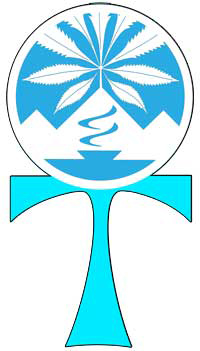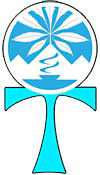burning Witches
While some Witches were burned to death, most commonly the dead body of the Witch was burned after execution by some other means, usually hanging.
One writer reports: “In a study on the agony of dying based on judgments of forensic pathologists (Rhyne, et.al., 1995), the most excruciating way to die is by fire, followed by pain of death resulting from cutting the throat and by stabbing the abdomen. The bruloirs intensified the pain of death by fire by slowing down the process and increasing its psychological impact by the horror of being enclosed in a small, dark place where the temperature was steadily raising. This method of execution is salient among the cruelest methods designed to intensify the agony of death.”
Christians have a long standing fascination with burning people to death.

The word “fire” is one of the most frequent words in the Christian Bible. The words “fire” (506 occurences), “blood” (375), and “death” (342) outnumber the word “love” (only 281 occurences). the word “fire” appears 79 times in the “New Testament” and 427 times in the “Old Testament”.
John 15:6 “Unless any one abide in me he is cast out as the branch, and is dried up; and they gather them and cast them into the fire, and they are burned.” Darby Translation
John 15:6 “If a man abide not in me, he is cast forth as a branch, and is iwithered; and men gather them, can cast them into the fire, and they are burned.” King James Version (KJV)
John 15:6 “If anyone does not abide in Me, he is thrown away as a branch and dries up; and they gather them, and cast them into the fire and they are burned.” New American Standard Bible (NASB)
John 15:6 “If any man dwelleth not in me, he shall be cast out as a branch, and shall wax dry; and they shall gather him, and they shall cast him into the fire, and he shall burn [and he burneth]”. Wycliffe New Testament
John 15:6 “If any ne may not remain in me, he was cast forth without as the branch, and was withered, and they gather them, and cast to fire, and they are burned;” Young’s Literal Translation
In 383 C.E., Priscillian of Avila was burned to death. Although originally accused of Manichaeism, the official reason he was executed was for Witchcraft.
In 1488, in Metz, France, an unusually cold summer (the result of the European mini-Ice Age) was blamed on Witchcraft and twenty-eight (28) persons were burned alive for Witchcraft.
In 1580 C.E., Jean Bodin wrote in De la Démonomani des Sorciers that “burning over a slow fire” was “not punishment enough for Witches” because it only took “about half an hour”.
In 1590, so many wooden stakes had been erected for burning Witches in Wolfenbüttel, Germany, that the site looked like a small forest.
In 1631, most of the villages and towns near Cologne, Germany, featured numerous stakes outside the walls with women bound to them and burned for Witchcraft.
In 1812, Jacob and Wilhelm Grimm published a collection of fairy tales drawn from German folk sources, including such famous fairy tales as Rapunzel, Rumpelstiltskin, and hansel and Gretel. In Kinder und Hausmarchen (page 68) the Brothers Grimm describe the burning of a with in an oven:
Hu! da fing sie an zu heulen, ganz grauselich;
aber Gretel lief fort, und
die gottlose Hexe muste elendiglich verbrennen.
Which translates into English as: “Oh! How the (old witch) did howl, it was quite horrible to hear her; but Gretel ran away, and the irreligious witch had to burn miserably.”
Numerous engravings from Medieval Europe show people being burned as Witches, their bodies surrounded by flames, their hair singed, their eyes dilated by fear. When Christians preach “love” they mean such horrible tortures as burning innocent Witches to death.
383 Priscillian of Avila burned for Witchcraft.
1275 Angela de la Barthe burned for Witchcraft at Toulouse, France.
1324 Petronilla de Meath flogged, excommunicated, and burned at the stake for Witchcraft at Kilkenny, Ireland, the first Witch murdered in Ireland.
1330 Barthelemy Andrius burned for Witchcraft at Carcassonne, France.
1330 Jean Andrius burned for Witchcraft at Carcassonne, France.
1330 Phillippe Andrius burned for Witchcraft at Carcassonne, France.
May 30, 1431 Joan d’Arc burned for Witchcraft at Rouen, France.
1546 Anne Askew burned for Witchcraft.
mid-1500s Madeline Amalaric burned for Witchcraft in France.
reign of Henry IV (December 13, 1553 - May 14, 1610) Marie Balcoin burned for Witchcraft in France.
1572 Janet Bowman burned for Witchcraft in Scotland.
1581 Anna Beuchel burned for Witchcraft at Waldsee, Germany.
1581 Appollonia Buckh burned for Witchcraft at Waldsee, Germany.
1583 Jean Bonnet burned alive for Witchcraft at Boissy-en-Ferez, France.
June 25, 1594 Agata Birenseng burned for Witchcraft at Waldsee, Germany.
December 16, 1594 Alison Balfour burned for Witchcraft at Edinburgh, Scotland.
1598 Pierre Aupetit burned for Witchcraft at Bordeaux, France.
1620 Anne Boulay burned for Witchcraft at Nancy, France.
1643 Janet Barker burned for Witchcraft in Scotland.
1643 Janet Brown burned for Witchcraft in Scotland.
1643 John Brugh burned for Witchcraft in Scotland.
April 14, 1647 Catterina Baroni beheaded and burned for Witchcraft at Castelnovo, Italy.
April 14, 1647 Domenica Camelli beheaded and burned for Witchcraft at Castelnovo, Italy.
April 14, 1647 Lucia Caveden beheaded and burned for Witchcraft at Castelnovo, Italy.
April 14, 1647 Zinevra Cemola beheaded and burned for Witchcraft at Castelnovo, Italy.
August 21, 1647 Thomas Boulle burned alive for Witchcraft at Rouen, France.
1661 Jonet Allen burned for Witchcraft in Scotland.
What possible reason could the U.S. government have for such Draconian penalties for cannabis? It is because Chrsitianity has always imposed Draconian penalties for Witchcraft, including torture and the death penalty. The Controlled Substances Act imposes harsher penatlies for cannabis than for rape, murder, and torture because the Christian judges and Congresspersons consider Cannabis Witchcraft to be a more serious religious offense than violent crimes.
See also: burning stakes and death penalty




